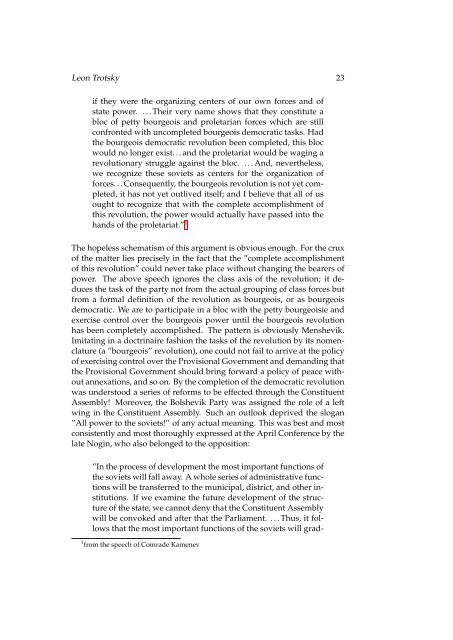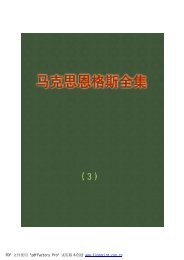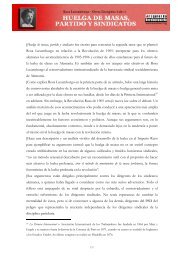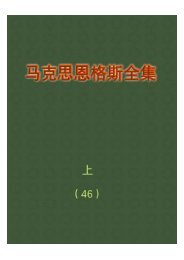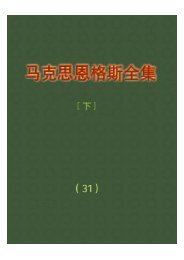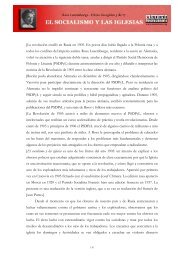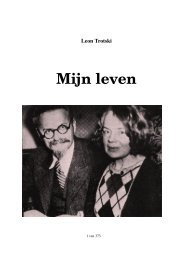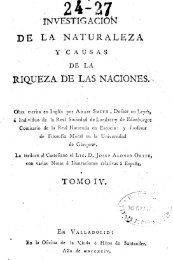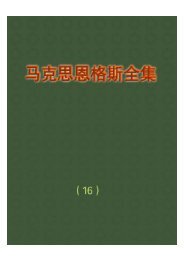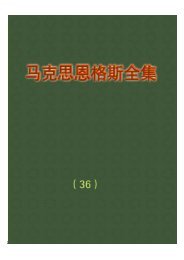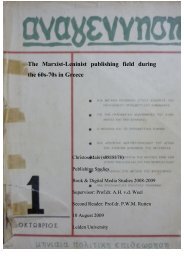Leon Trotsky, The Lessons of October - Platypus
Leon Trotsky, The Lessons of October - Platypus
Leon Trotsky, The Lessons of October - Platypus
You also want an ePaper? Increase the reach of your titles
YUMPU automatically turns print PDFs into web optimized ePapers that Google loves.
<strong>Leon</strong> <strong>Trotsky</strong> 23if they were the organizing centers <strong>of</strong> our own forces and <strong>of</strong>state power. . . . <strong>The</strong>ir very name shows that they constitute abloc <strong>of</strong> petty bourgeois and proletarian forces which are stillconfronted with uncompleted bourgeois democratic tasks. Hadthe bourgeois democratic revolution been completed, this blocwould no longer exist. . . and the proletariat would be waging arevolutionary struggle against the bloc. . . . And, nevertheless,we recognize these soviets as centers for the organization <strong>of</strong>forces. . . Consequently, the bourgeois revolution is not yet completed,it has not yet outlived itself; and I believe that all <strong>of</strong> usought to recognize that with the complete accomplishment <strong>of</strong>this revolution, the power would actually have passed into thehands <strong>of</strong> the proletariat.” 1<strong>The</strong> hopeless schematism <strong>of</strong> this argument is obvious enough. For the crux<strong>of</strong> the matter lies precisely in the fact that the ”complete accomplishment<strong>of</strong> this revolution” could never take place without changing the bearers <strong>of</strong>power. <strong>The</strong> above speech ignores the class axis <strong>of</strong> the revolution; it deducesthe task <strong>of</strong> the party not from the actual grouping <strong>of</strong> class forces butfrom a formal definition <strong>of</strong> the revolution as bourgeois, or as bourgeoisdemocratic. We are to participate in a bloc with the petty bourgeoisie andexercise control over the bourgeois power until the bourgeois revolutionhas been completely accomplished. <strong>The</strong> pattern is obviously Menshevik.Imitating in a doctrinaire fashion the tasks <strong>of</strong> the revolution by its nomenclature(a ”bourgeois” revolution), one could not fail to arrive at the policy<strong>of</strong> exercising control over the Provisional Government and demanding thatthe Provisional Government should bring forward a policy <strong>of</strong> peace withoutannexations, and so on. By the completion <strong>of</strong> the democratic revolutionwas understood a series <strong>of</strong> reforms to be effected through the ConstituentAssembly! Moreover, the Bolshevik Party was assigned the role <strong>of</strong> a leftwing in the Constituent Assembly. Such an outlook deprived the slogan”All power to the soviets!” <strong>of</strong> any actual meaning. This was best and mostconsistently and most thoroughly expressed at the April Conference by thelate Nogin, who also belonged to the opposition:”In the process <strong>of</strong> development the most important functions <strong>of</strong>the soviets will fall away. A whole series <strong>of</strong> administrative functionswill be transferred to the municipal, district, and other institutions.If we examine the future development <strong>of</strong> the structure<strong>of</strong> the state, we cannot deny that the Constituent Assemblywill be convoked and after that the Parliament. . . . Thus, it followsthat the most important functions <strong>of</strong> the soviets will grad-1 from the speech <strong>of</strong> Comrade Kamenev


